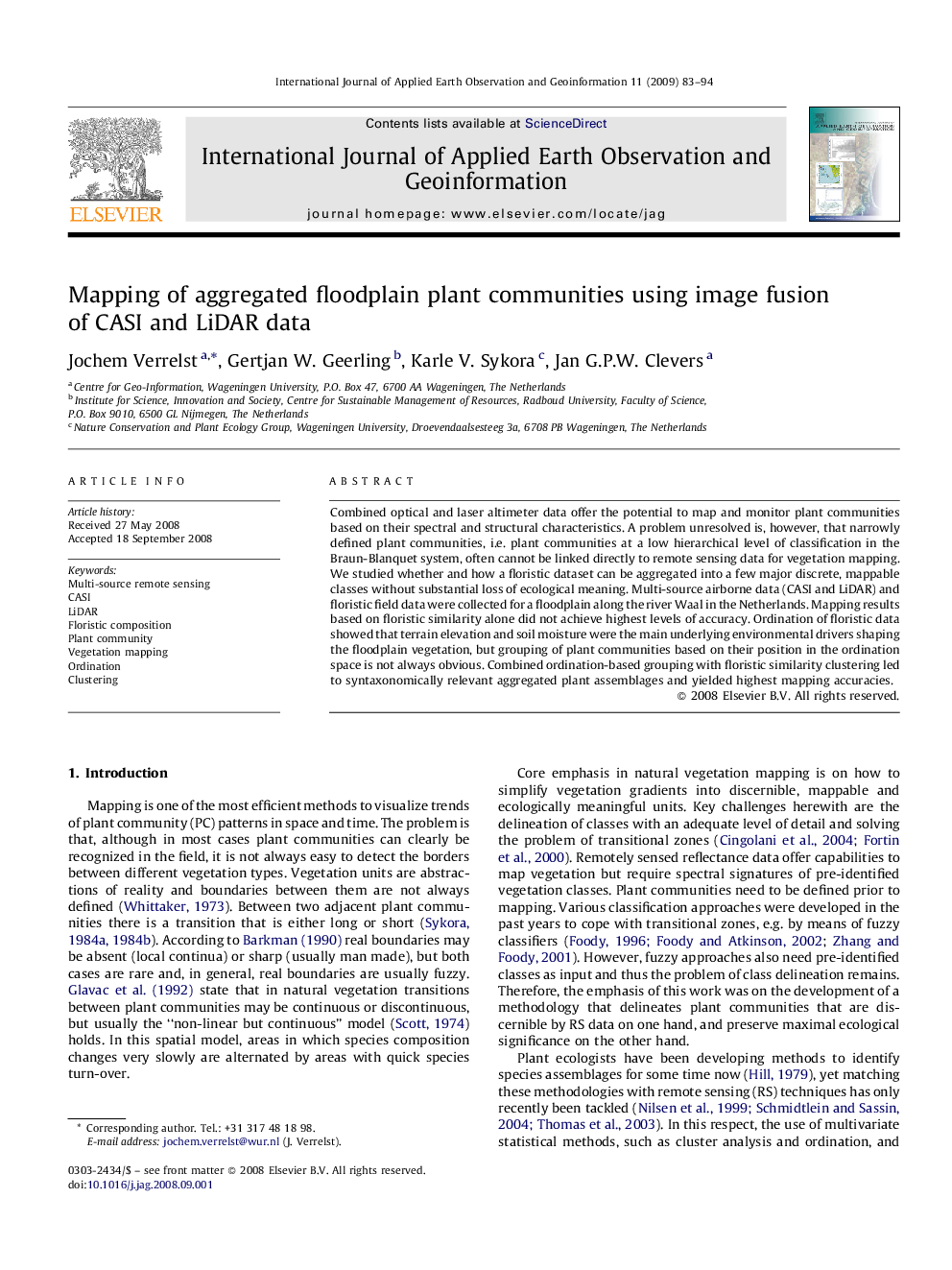| Article ID | Journal | Published Year | Pages | File Type |
|---|---|---|---|---|
| 4465163 | International Journal of Applied Earth Observation and Geoinformation | 2009 | 12 Pages |
Combined optical and laser altimeter data offer the potential to map and monitor plant communities based on their spectral and structural characteristics. A problem unresolved is, however, that narrowly defined plant communities, i.e. plant communities at a low hierarchical level of classification in the Braun-Blanquet system, often cannot be linked directly to remote sensing data for vegetation mapping. We studied whether and how a floristic dataset can be aggregated into a few major discrete, mappable classes without substantial loss of ecological meaning. Multi-source airborne data (CASI and LiDAR) and floristic field data were collected for a floodplain along the river Waal in the Netherlands. Mapping results based on floristic similarity alone did not achieve highest levels of accuracy. Ordination of floristic data showed that terrain elevation and soil moisture were the main underlying environmental drivers shaping the floodplain vegetation, but grouping of plant communities based on their position in the ordination space is not always obvious. Combined ordination-based grouping with floristic similarity clustering led to syntaxonomically relevant aggregated plant assemblages and yielded highest mapping accuracies.
